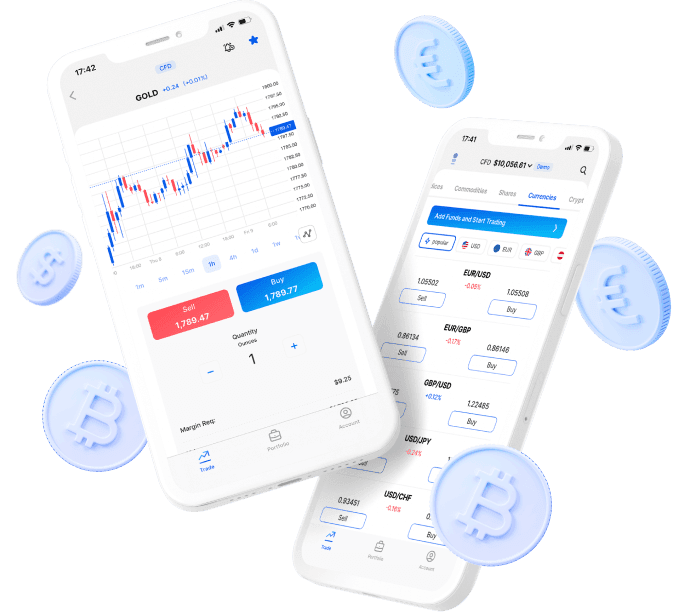Friday Feb 9 2024 06:55

10 min

Standard deviation is a statistical concept that measures the dispersion or variability of a set of data points. In the context of trading, standard deviation is used to quantify the volatility of a financial instrument. It provides a measure of how much the price of an asset is likely to deviate from its average price. A higher standard deviation indicates greater price volatility, while a lower standard deviation suggests relatively stable prices.
Market volatility is a term that is frequently used in the world of trading, but what exactly does it mean? Volatility refers to the degree of variation or fluctuation in the price of a financial instrument over time.
It is a measure of how much the price of an asset deviates from its average price. Understanding market volatility is crucial for traders as it can provide valuable insights into market conditions and help inform trading strategies.
Standard deviation is a key tool for traders as it helps them assess and manage risk. By understanding the level of volatility in the market, traders can make more informed decisions about when to enter or exit trades.
High levels of volatility may present profit opportunities, but they also come with increased risk. Conversely, low levels of volatility may offer more stability but potentially lower returns. The standard deviation allows traders to gauge the potential risks and rewards associated with different trading strategies.
In addition to risk management, standard deviation can also be used to identify trends and patterns in market behaviour.
By analysing the standard deviation of price movements over time, traders can gain insights into market cycles and make predictions about future price movements. This can be particularly useful in identifying potential trading opportunities and maximising profitability.
Calculating standard deviation in trading involves a series of mathematical calculations. Fortunately, most trading platforms and charting software have built-in tools that can automatically calculate the standard deviation for you. However, it is still important to understand the underlying formula and how it works.
The formula for calculating standard deviation is as follows:

To calculate the standard deviation (SD), follow these steps:
Interpreting standard deviation in trading requires an understanding of the concept of bell curves, or normal distributions. In a normal distribution, approximately 68% of the data falls within one standard deviation of the mean, 95% falls within two standard deviations, and 99.7% falls within three standard deviations.
This means that the majority of price movements are expected to fall within a certain range around the average price. For example, if a stock has a standard deviation of 1, it means that about 68% of the time, the price will be within 1 standard deviation above or below the average price.
If the standard deviation is 2, it means that about 95% of the time, the price will be within 2 standard deviations above or below the average price. By understanding these ranges, traders can set realistic expectations for price movements and determine appropriate entry and exit points for their trades.
It also allows them to identify potential outliers or extreme price movements that may warrant further analysis or adjustment of their trading strategy.

One of the primary uses of standard deviation in trading is to manage risk. By understanding the level of volatility in the market, traders can adjust their position sizing and set appropriate stop-loss orders to limit potential losses.
A higher standard deviation indicates greater price volatility, which may require smaller position sizes to mitigate risk. Conversely, a lower standard deviation suggests relatively stable prices and may allow for larger position sizes.
In addition to position sizing, standard deviation can also be used to determine the optimal placement of stop-loss orders. By setting stop-loss levels based on the standard deviation of price movements, traders can ensure that their positions are protected from significant adverse price movements while still allowing for some volatility within the normal range.
Furthermore, standard deviation can help traders identify potential overbought or oversold conditions in the market. If the price of an asset deviates significantly from its average price, it may indicate a potential reversal or correction in the market.
By monitoring standard deviation, traders can identify these opportunities and adjust their trading strategies accordingly.
While standard deviation is a valuable tool in trading, there are several common misconceptions that traders should be aware of. One misconception is that a higher standard deviation always indicates greater profitability.
While higher volatility can present profit opportunities, it also comes with increased risk. Traders should carefully consider the potential risks and rewards associated with higher volatility before implementing a trading strategy.
Another misconception is that standard deviation is a predictive tool that can accurately forecast future price movements. While standard deviation can provide insights into market behaviour and trends, it is not a crystal ball.
Price movements are influenced by a multitude of factors, and past performance may not necessarily indicate future results. Traders should use standard deviation as one piece of the puzzle and incorporate other technical and fundamental analysis tools for a more comprehensive view of the market.

There are several strategies that traders can use to incorporate standard deviation in their trading. One common strategy is volatility breakout, where traders enter trades when the price breaks out of a predefined range determined by the standard deviation.
This strategy takes advantage of periods of high volatility and aims to capture significant price movements. Another strategy is mean reversion, which involves trading against the prevailing trend and assuming that prices will revert to their mean or average.
By monitoring the standard deviation, traders can identify potential oversold or overbought conditions and enter trades with the expectation that prices will eventually return to their normal range.
Additionally, standard deviation can be used in conjunction with other technical indicators such as moving averages or Bollinger Bands to confirm trading signals and increase the probability of success. By combining multiple indicators, traders can reduce the likelihood of false signals and improve the overall accuracy of their trading decisions.
There are several tools and resources available to traders for tracking standard deviation in trading. Most trading platforms and charting software provide built-in indicators and tools for calculating and visualising standard deviation.
These tools can help traders identify trends, set stop-loss levels, and make informed trading decisions based on the level of volatility in the market.
In addition to charting software, there are also online resources and educational materials that provide insights and strategies for incorporating standard deviation in trading. These resources can help traders deepen their understanding of standard deviation and its applications in different trading scenarios.
Mastering market volatility is a crucial skill for traders, and standard deviation is a powerful tool that can help traders navigate the unpredictable nature of financial markets.
By understanding and interpreting standard deviation, traders can assess risk, identify trading opportunities, and make more informed decisions. Incorporating standard deviation into trading strategies can provide a competitive edge and improve overall profitability.
So, embrace market volatility and leverage the power of standard deviation to achieve success in your trading journey.
Learn and trade with market.com, the ultimate trading community


Join the 100.000s that have made markets.com their home for trading. Learn about trading as you grow your portfolio.
More power in our platforms
We currently cannot accept clients from your country. If you have received this message in error, please contact our support team at support@markets.com.
Contact Support
“When considering “CFDs” for trading and price predictions, remember that trading CFDs involves a significant risk and could result in capital loss. Past performance is not indicative of any future results. This information is provided for informative purposes only and should not be considered investment advice.”
Asset List
View Full ListLatest
View all
Wednesday, 23 April 2025

5 min

Tuesday, 22 April 2025

5 min

Monday, 21 April 2025

6 min